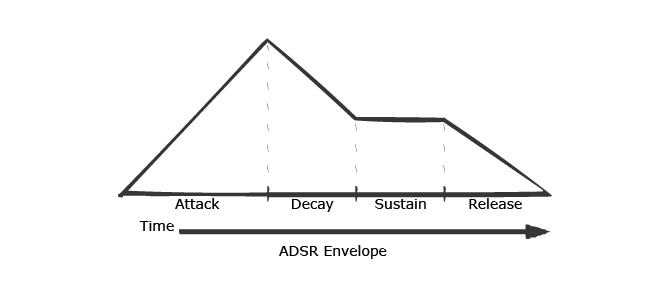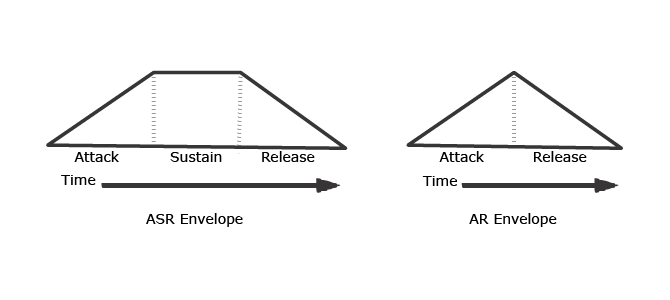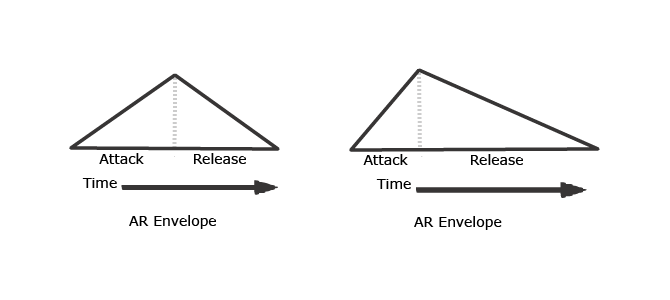30. Envelope Generators
The envelope generator is one of the most musically useful time-variant controllers. As its name indicates, the envelope generator outputs an envelope, a term referring to the shape itself. Typically the envelope that is output is a non-periodic shape made up of several segments or stages. The four-stage envelope is a very common envelope shape.







Example 30-1: A common time-variant controller is the envelope generator, whose output "envelope" shape can be adjusted and sent to the oscillator, filter or amplifier to modify a signal.
While it may not be improper to name the various segments of the envelope by number, musicians refer to the four-stage envelope as attack, decay, sustain, and release; or ADSR.

Diagram 30-2: ADSR Envelope.
In some cases an envelope may have fewer than four stages.

Diagram 30-3: Envelopes with fewer than four stages.
Envelope generators have additional controls that allow their specific envelope shape to be varied, while retaining their basic shape. For example, the attack and release segments of a two-stage envelope might be of equal duration. By comparison, a second two-stage envelope might output with a shorter attack duration, a lower level setting, and a longer release duration.
In examples such as these envelopes are shaped by specifying different time and level values. The time value specifies the time it takes the envelope to move from its current level to the next specified level. The level value defines the level achieved during the specified time.

Diagram 30-4: Differing time and level values.
Envelope generators can be directed to control the oscillator, the filter, or the amplifier, and depending on which of the three basic modules is the destination of the signal, a different musical result will occur. This means that if the envelope is sent to the oscillator then the frequency will change over the course of time in accordance with the input shape of the envelope. If the envelope is sent to the filter, then the cut-off frequency will change over the course of time in accordance with the input shape. And finally, if the envelope is routed to the amplifier, then the amplitude will change over the course of time in accordance with the shape. This flexibility of the system, allowing a controlling envelope shape to be sent to any of the three basic modules, makes the envelope generator, because of its ultimate musical effect, a valuable component of any synthesis system.



